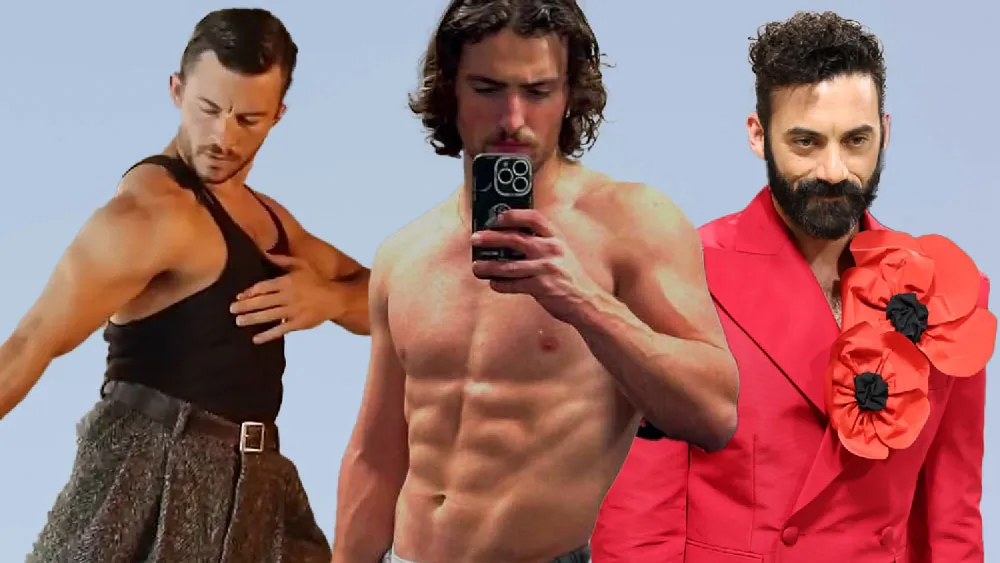May 9, 2015
Saint Laurent
Michael Cox READ TIME: 3 MIN.
If you're looking for practical wear, something that you don't need to dry clean or iron or have fitted in the first place, you've come to the wrong place. "Saint Laurent" is strictly couture, which is to say, set aside your real-world, down-to-earth ideas about structure, plot and characterization. This movie is completely esoteric and certainly high-art.
It may be unrealistic, but it may also change the way we look at and think about film design and thereby set new trends.
If you're looking to learn more about the life of the legendary fashion designer Yves Saint Laurent and understand how he met his lover and business partner Pierre Berg�, if you want a luscious biopic that chronicles a life, then you'll want to watch a different film "Yves Saint Laurent" (2014), directed by Jalil Lespert.
"Saint Laurent" is far less objective than your typical biopic (and that's not saying much, no one is looking for a documentary or a piece of journalistic research when they go to a docudrama.) Still, director Bertrand Bonello attempts to make something almost completely subjective, something that is less interested in fact and more interested in style.
"Research is not about knowledge," says the director, "but about knowing why you take liberties, all the better to capture the truth."
The only restriction the producers (brothers Eric and Nicolas Altmayer) put on Bonello was that he work with another screenwriter, Thomas Bidegain, to craft the script. (And even that doesn't reel in the director's wild and careening freedom of expression.)
Bonello fully expects that you will watch "Yves Saint Laurent" before you watch his film. In this, you will learn the details of how the designer met his partner and how they formed their brand. You'll learn about the famous Mondrian dress that Saint Laurent debuted in 1965 and the moment he stopped being post-Dior and came into his own. And you'll get a better idea of how the creation of pret-�-porter made high fashion popular.
Though "Saint Laurent" is three quarters of an hour longer than its predecessor (150 minutes), it covers only nine years in Yves Saint Laurent's life, from 1967-1976. It skips most of the setup and exposition beginning the narrative well into Saint Laurent's successful career.
Bonello and Bidegain's vision was to divide the script into three acts that mostly followed emblematic collections rather than life events. Story is not a clearly defined path, rather it is hinted at: We don't get any clich�s that tell us Yves Saint Laurent (Gaspard Ulliel) became a success and rose to fame by creating clothing that transformed women. Rather we see an artistic man at the top of his game who becomes a brand name and his partner, a businessman that will do anything to preserve that name. To Pierre Berg� (J�r�mie Renier), the YSL name becomes more important than the man.
In the first act, which builds up to the famous photo of Saint Laurent posing naked, we watch long, mundane and often incomprehensible scenes about day-to-day business.
One eight minute long scene, where Pierre Berg� meets with his American partner, is a classic example of way too much information for your typical audience member. (And it becomes even more confusing as English is verbally translated to French and then translated back into English in subtitles.)
Still, in this boring, confusing and almost meditative scene we see the very subtle outline of a character, who in a traditional script would be painted in much more garish colors.
That's not to say this movie is constantly cerebral; there are some scenes that grab at the heart and at the groin -- nerve-wracking, decadent and sensual experiences. In the second act, Saint Laurent becomes a star and his life falls apart. In one unforgettable moment, we watch the designer's darling dog Moujik innocently consuming mass amounts of his owner's drugs. Rather than watching a direct example of Saint Laurent self-destruction, we watch his pet suffer and die, while the artist is too wasted to do anything about it.
The last act completely abandons chronology jumping forward and backward in time. Saint Laurent as a child meshes with Saint Laurent just before his death, and all the while models walk down the runway. The screen splits into a fractured montage of images, geometrically arranged in rectangles on the screen.
It's absolutely beautiful and nothing like you'd expect it to be. If Yves Saint Laurent used haute couture to transform women, then Bertrand Bonello attempts to use the biopic to transform narrative film.


